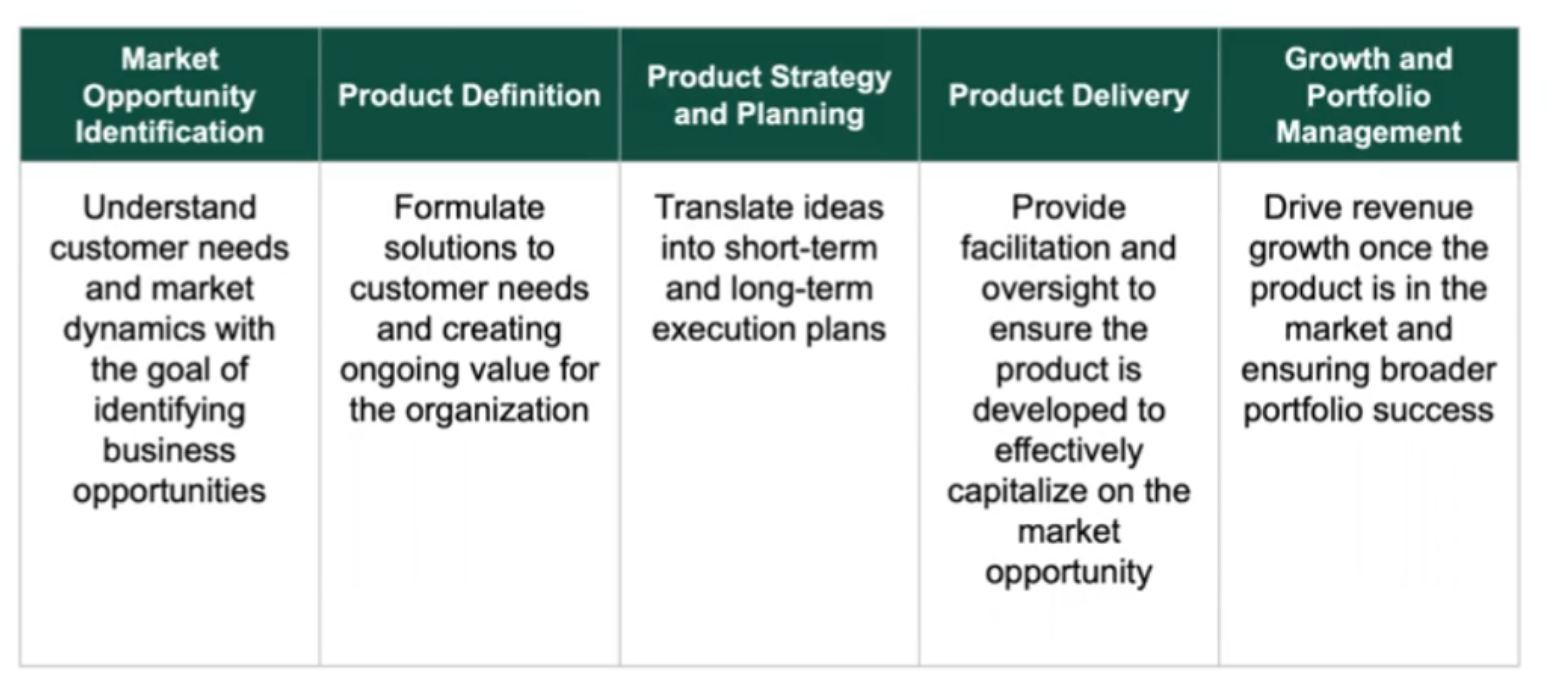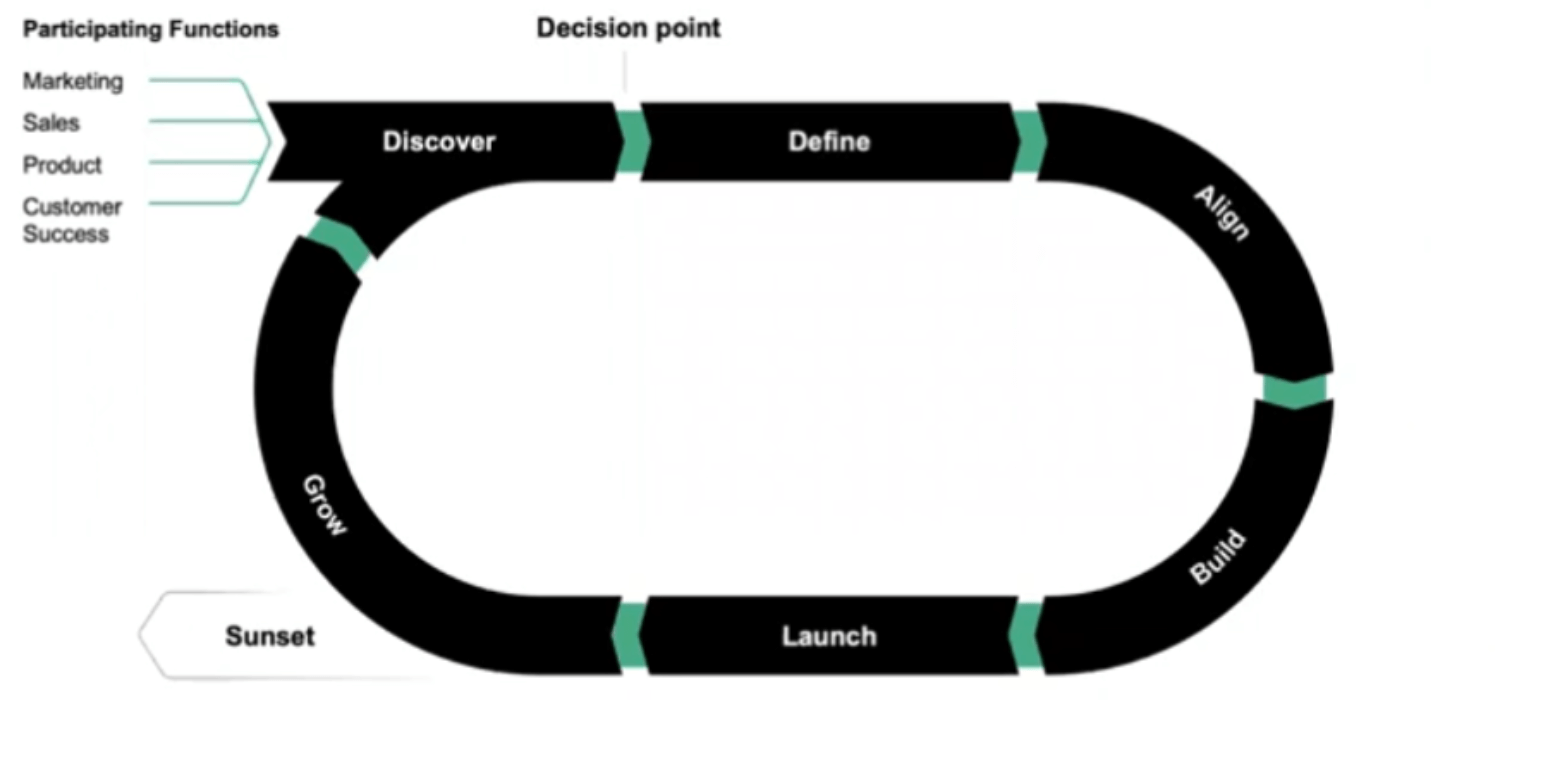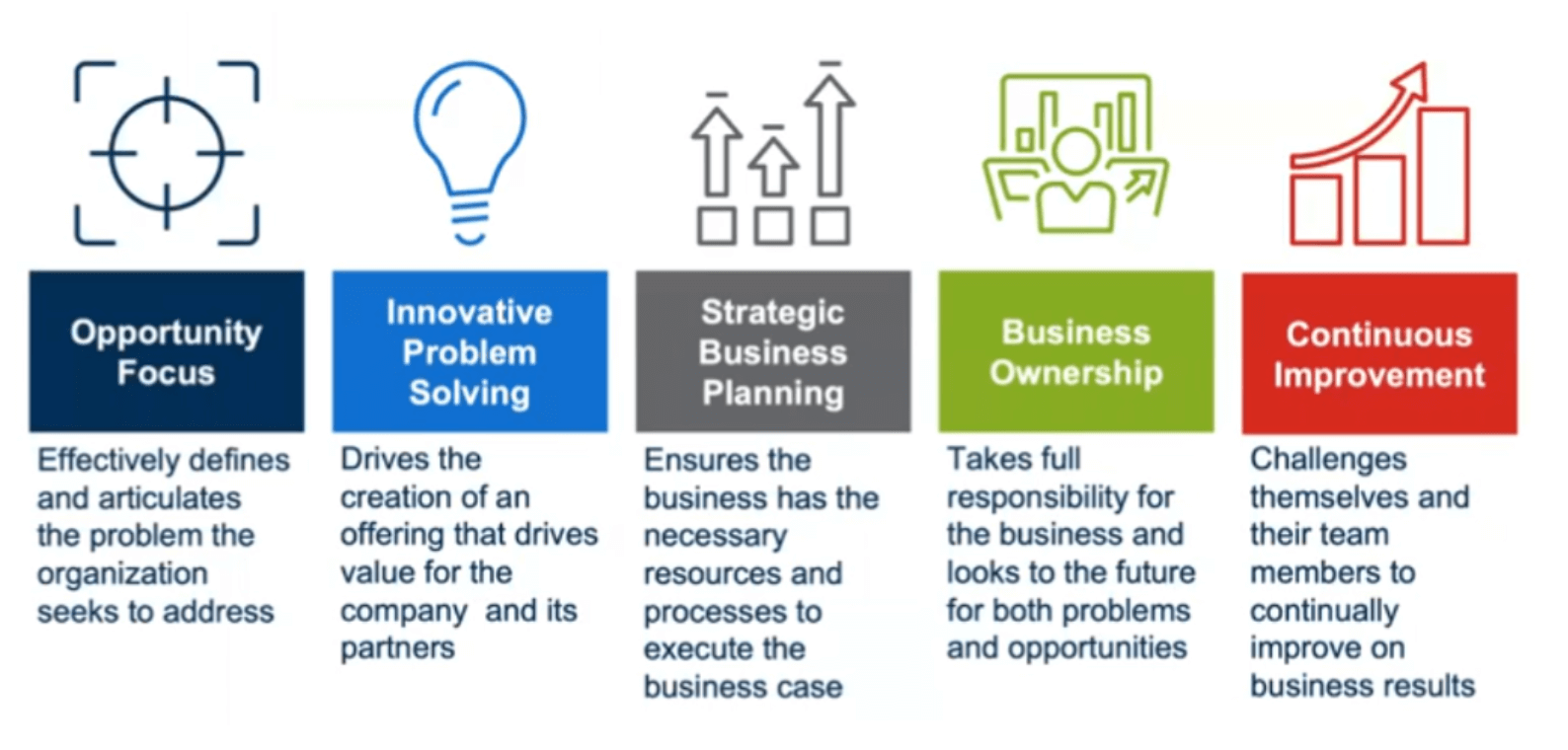Forrester’s definition of modern product management

With over 25 years of experience in product management roles across a variety of industries, Sam Somasheka has seen the product industry change at a rapid pace. Today, as lead analyst for Forrester’s Product Management Research Service, he’s perfectly placed to know where it’s heading.
In a recent Productboard webinar, Sam shared his thoughts on the importance of strategic product management, how the industry is evolving, and what PMs need to know to be successful.
Here are the key takeaways from Sam’s talk.

Product management involves five key responsibilities
To communicate the importance of product management, you first need to be able to define what it involves. At Forrester, Sam uses the Range of Responsibilities model, which outlines the role of product management across five key disciplines.
1. Identifying market opportunities
It is the product manager’s job to understand customer needs, market dynamics, and the competitive landscape, with the goal of identifying business opportunities.
2. Define the product
Once they know what customers need, product management is responsible for defining a solution. Where there are multiple opportunities, it’s important to be able to prioritize them effectively.
3. Product strategy and planning
Product management is also responsible for establishing and maintaining a strategy and release plan for that offering. At this point, PMs must translate their ideas into short-term and long-term execution plans. They must be able to articulate their vision and strategy for the offering, while ensuring that it’s aligned with the company’s wider business strategy and goals.
4. Product delivery
Now it’s time to deliver the solution. PMs must work with their engineering and product development counterparts to ensure that they understand exactly what is needed. And when the product is ready, they need to ensure that it matches the specifications and UX/UI requirements.
5. Growth and portfolio management
With the product now on the market, it’s time to grow and maintain it. This involves monitoring and measuring how it’s being used, making decisions as to whether it can be improved or modified, and eventually whether it could be retired and replaced altogether.

Cross-departmental collaboration and alignment are key
To be successful, Sam points out, product management requires cross-departmental collaboration and alignment. As Forrester’s PMM model shows below, product management should continuously align with different functions to drive opportunities through a customer-centric product lifecycle process.

“When you look at the entire process, there has to be good alignment across marketing, sales, customer success, the finance group, and executive staff. Because when you think about taking an offering from discovery all the way through to delivery and beyond, they all have a part to play. Everyone needs to be aligned. You could have the best product out there, but if you can’t market it well, or if you can’t sell it well, then it won’t do as well as you think.”
Strategic product management goes beyond mere ‘order taking’
The five key areas of responsibility that we outlined previously are what Sam calls ‘table-stakes responsibilities.’ In other words, they are the minimum that is acceptable to get the job done. You may not have an individual product manager who’s able to perform in all five areas, but at the very least the overall product management organization should be able to.
According to Sam, strategic product management requires you to go beyond that basic order-taking approach. It’s about making decisions that create value for the organization, both today and in the future, while creating opportunities for product managers to advance and grow their careers.
Strategic product management helps to:
- Drive purpose-driven businesses that provide sustainable value to users/customers and the organization
- Ensure that the actions and decisions you make today will make a difference in the business tomorrow
- Guarantee that you and your team members will be the business leaders of the future by continuously upskilling and becoming better at your craft
The foundations of strategic product management
When we look at strategic product management, Sam points out five foundations that sit on top of the key responsibilities we outlined earlier. Understanding these is central to delivering sustainable, long-term value to your business and customers.
Opportunity focus
A product manager must clearly define and articulate the problem the organization seeks to address. Many product managers focus on the solution before the problem. It’s critical to first understand what it is you are trying to solve before you focus on the solution.
This involves understanding the customer and the market, looking at business opportunities and sizing them, verifying that they’re realistic, and making sure that those opportunities make sense for the organization.
Innovative problem solving
Once the product manager has fully articulated the buyer and need, they need to focus on directing the building of the solution, while creating ongoing value for the company. They also have to outline any technology or route-to-market partners that may be involved in that process.
The product manager needs to be a critical thinker who evaluates new and different approaches to customer needs and challenges the status quo.
Strategic business planning
This is all about ensuring that the business has the necessary resources and processes to execute the business case.
The strategic product manager should take ownership of business planning and provide a clear focus. They must ensure that resources are not squandered but rather focused on an executable shared goal.
Business ownership
A strategic product manager demonstrates ownership for their part of the business, treating it as if it were their own small company. This means being results-oriented, with a mind for the future.
Continuous improvement
The success or failure of a product becomes evident pretty quickly. It’s necessary to make strategic changes along the way.
The strategic product manager is prepared to challenge themselves and their team members to continually improve on business results. They remain strategic as the business evolves, and they continue to be adaptable and accountable for the success of the product.

How the role of product management is evolving
Like any industry or practice, product management is constantly evolving. Today, the rate of change is faster than ever. Sam outlined three key areas that are currently driving change in product management – and offered some practical ideas for how PMs can adapt.
Changing customer expectations
Customers always expect more. The products or features that were once novel and exciting are now standard and boring. This forces businesses to innovate or die.
For example, in the B2C world, everything is now available online at a fingertip’s notice. Many customers also expect a similar experience from their B2B partners. They expect B2B products to be just as easy, intuitive, and pleasing as the products they use in their free time.
At the same time, technology is becoming better, faster, cheaper, and more powerful. This further increases customers’ expectations, which in turn increases the rate of change – and so on. Not only is this cycle continuously repeating, but it’s also getting faster all the time.
Changes in the way customers buy and use products
In the past, if you wanted to use a product and get value out of it, there was a multistep process to go through that was linear and sequential. You’d register to see a demo, then get a guided walk-through from a sales rep, then go through the arduous process of installation, setup, and training. Only then, at the end of a long process, would you be able to use the product.

Today, the separation between buying and using a product is disappearing. You can sign up for a free trial and start using the product right away. Later on, if you like what you see, you can upgrade to a paid account and add more users.

In line with this shift, an increasing number of companies are using their products as their engine of growth, integrating product usage into the buying process.
Changes in how value is created
Companies were once defined by their product alone. To survive today, they need to differentiate themselves by adding value throughout the entire product experience.
Take movies, for example. In the past, you had to go to your local video store and rent a VHS or DVD. Then along came Netflix, allowing you to explore a library of movies and shows from the comfort of your sofa. Now, you can watch movies on your phone, wherever you are.
The product hasn’t changed – you can watch the same film on your phone that you used to rent from Blockbuster 20 years ago. What has changed is the experience of using it.
For product managers, the key is to expand our view beyond features and functions to see what value we create throughout the entire product experience. It’s not just the robot lawnmower, it’s the app that controls it and defines the experience.
“When we talk to organizations, we tell them to expand their view to really look at the entire product experience. Organizations that do that while addressing customers’ unspoken and evolving needs – day in, day out – are the ones that continuously deliver more value.”
What does product management need to do differently?
To be successful at managing the total product experience, Sam says that product management needs to fully commit to three key areas of responsibility even more so than before.
Being value-oriented
Being value-oriented means having a deep understanding of customer needs, delivering value throughout the entire experience, and focusing on improvements that tie back to desired outcomes.
“When we talk to product management about what they need to do differently, the first thing we tell them is the importance of being value-oriented. Think about the value that you need to deliver to the customer. What does that look like? Is the product the value or is it a means to the value?”
Being flexible
It is critical that PMs can discover, design, and deliver quickly and iteratively. They need to be able to adapt and respond to changing customer expectations and experiment and innovate throughout the entire product experience.
“It’s about being continuous in your discovery efforts and knowing that your learnings may change things. Be receptive to that change. And make sure that you provide continuous experimentation as well.”
Being accountable
Sam stresses the need for product management to be accountable at all levels, including to:
- The organization – for delivering products that support the overall business strategy and deliver and accelerate growth
- For peers and stakeholders – for achieving defined success metrics
- To customers – for product experiences that consistently address needs, provide value, and help them achieve their goals
“Some folks call product managers a mini CEO of the product – and that continues to hold. The idea here is that you should be responsible for product management as a business.”




